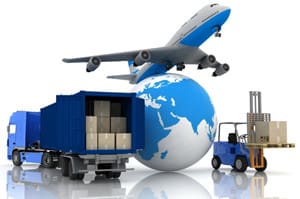 I am finishing up my latest market study on global transportation execution and visibility systems. Transportation Execution Solutions (TE) allow shippers to connect to multiple carriers and then tender, track, and pay in the system. Visibility solutions allow real-time asset tracking across the entire distribution network. This enables improved estimated arrival times of goods. Visibility solutions are playing a larger role in the market, as real-time tracking of assets becomes more important. Suppliers of visibility solutions continue to bring in additional data streams for better ETAs.
I am finishing up my latest market study on global transportation execution and visibility systems. Transportation Execution Solutions (TE) allow shippers to connect to multiple carriers and then tender, track, and pay in the system. Visibility solutions allow real-time asset tracking across the entire distribution network. This enables improved estimated arrival times of goods. Visibility solutions are playing a larger role in the market, as real-time tracking of assets becomes more important. Suppliers of visibility solutions continue to bring in additional data streams for better ETAs.
Visibility solutions are becoming more necessary. The need to know where products are, whether they are on the way to the warehouse, store, or customer, is critical to ensure a positive customer experience. The rise of visibility solutions at the container-level is helping to drive the transportation execution market to new heights. While this application is helping to fuel overall market growth, there are a number of other growth factors and trends that are pushing the market forward as well. These growth factors touch upon emerging technologies and general trends.
Transportation Execution Technology
Machine Learning: machine learning is becoming increasingly important in transportation execution systems. The most notable application is generating a more informed and up-to-date estimated time of arrival (ETA) for shipments. Machine learning is working with real-time visibility solutions to learn more about constraints (such as capacity, regulations, and hours of service) and then using that information to give a much better ETA for shipments to warehouses, stores, and the end customer.
Companies are also partnering with data aggregators to get a better idea when shipments will arrive. This includes port data, SNEW data, weather data (to some degree), traffic data, and other available sources to provide accurate ETAs to warehouses, stores, and end consumers.
Internet of Things: for a truer ETA, companies are using IoT data from trucks to get a better understanding of driver behavior, such as typical driving speeds and times as well as how they operate in heavily congested areas. Companies can take sensor data from trucks and incorporates hours of service rules to know when, where, and for how long a driver needs to stop. These applications also understand that where and when the driver stops will have an impact on the ETA. This is especially true if drivers stop before a major city and will have to endure rush hour traffic once they start driving again.
Blockchain: this technology is all about a digital ledger as it applies to chain of custody. For many industries, this is not an issue. However, for pharmaceuticals, this is a critical component of transporting goods throughout the supply chain. Most pharmaceutical companies have a small window to get products from point A to B without changes in temperature. Blockchain monitors who has access to the temperature data, and whether that changes between modes.
Transportation Execution Growth Drivers
A strong ROI: Transportation execution and visibility solutions can lead to the selection of lower priced, higher service level carriers. The automation can decrease workloads in the transportation department. Visibility can increase service levels for customers, which increases revenues. In addition, parcel solutions have new features and functions that can be used to increase e-commerce sales.
Capacity Fluctuations: The often-reported driver shortage is not going away. However, the bigger issue is the continued shift in available capacity, which continues to be fragmented. The changing nature of capacity means shippers need access to capacity ahead of demand. Capacity is likely to continue to tighten as the ELD mandate takes full effect, especially with the looming deadline for AOBRD technology to be phased out.
E-commerce: The continued growth of e-commerce is putting more emphasis on last mile deliveries, and parcel execution is becoming more important. This also means companies need more visibility into where products are for more accurate ETAs. The rise of e-commerce has also made the economy more global in nature. This is turn has led to the need for consolidation and de-consolidation of shipments in an efficient manner. Cross-border commerce is becoming increasingly important, as more customers expect a simple process when ordering items from another country. This is making the world smaller and transportation execution systems even more important.
E-commerce is also leading to a more open marketplace. Many manufacturers have seen that they can profit from selling direct to customers, rather than using retail channels like in the past. This is placing a bigger emphasis on parcel shipping and driving significant growth.

















